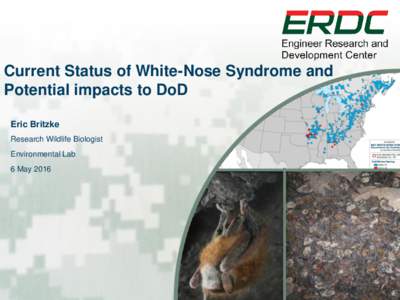 Date: 2016-06-16 12:27:26Mouse-eared bats Bats Bats of the United States Vesper bats Bats of Canada Speleology White nose syndrome Virginia big-eared bat Little brown bat Eastern small-footed myotis Corynorhinus Pseudogymnoascus destructans | |  Current Status of White-Nose Syndrome and Potential impacts to DoD Eric Britzke Research Wildlife Biologist Environmental Lab 6 May 2016 Current Status of White-Nose Syndrome and Potential impacts to DoD Eric Britzke Research Wildlife Biologist Environmental Lab 6 May 2016
Add to Reading ListSource URL: www.dodnaturalresources.netDownload Document from Source Website File Size: 3,80 MBShare Document on Facebook
|


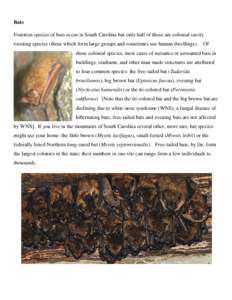
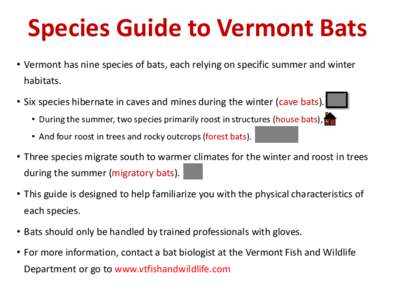
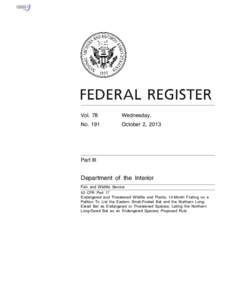
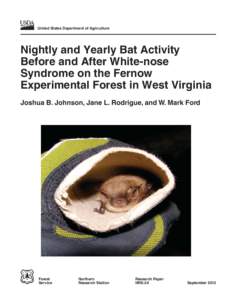
 Current Status of White-Nose Syndrome and Potential impacts to DoD Eric Britzke Research Wildlife Biologist Environmental Lab 6 May 2016
Current Status of White-Nose Syndrome and Potential impacts to DoD Eric Britzke Research Wildlife Biologist Environmental Lab 6 May 2016